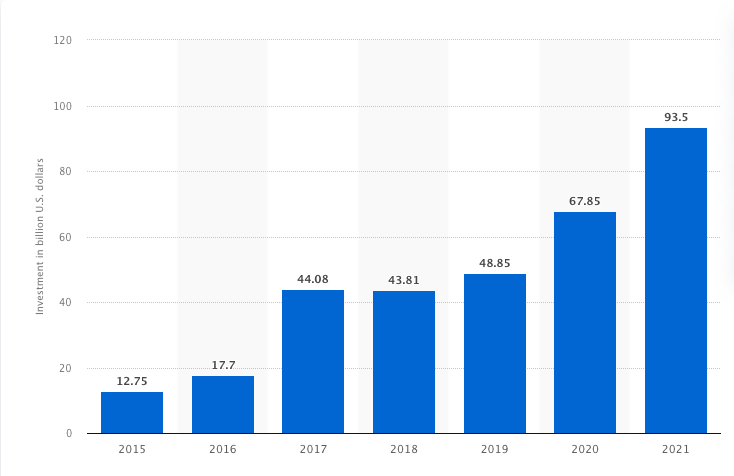
Welcome back - how did you get on in the quiz?
In Part 1, you learned about identifying opportunities for innovation and discovered some mapping techniques, such as value chain maps and the nine technology readiness levels.
In Part 2, we will put the theory into practice to examine some key areas of emerging technology in more detail.
In this chapter, you’re going to learn how to use three angles to answer the question, “How do I determine if it’s time to push for an emerging technology in my life or my business?”
Those three angles are investment, maturity, and application.
Follow the Money
The venture capital world offers a handy set of leading metrics that can help you understand where the future of emerging technology is heading.
A couple of years ago, I was talking (as I occasionally do) with one particular investor. He was keen for me to understand his role in the world of innovation. “All these entrepreneurs,” he told me, “may well invent the businesses that become unicorns - but I pay for it. Without my money, those unicorns simply wouldn’t exist.”
He had a point. The VC industry succeeds when it makes the best bets about the future of technology and innovation. So if you want a cheat’s guide to the direction that technology is developing, you could do a lot worse than to follow the money.
Take AI as an example. Over the past ten years, we’ve seen rapid growth in corporate investment in AI, up from a little less than $13 billion in 2015 to $93 billion in 2021. The pattern of growth is fascinating. You could read the following graph from Statista as showing early, speculative investment in the first couple of years, then two sets of jumps as validation of early promise reinforce the market potential.

Measuring Maturity
We looked closely at technology readiness level in the previous chapter alongside the Gartner Hype Cycle. Again, these tools help you to understand where an emerging technology stands on a maturity curve.
This is the starting point for measuring maturity.
Taking that thinking a step or two further, you can start asking some more questions to assess how fit for purpose a new technology is for inclusion in your value chain:
Ask who else is using it - and how.
Consider how many different innovators are offering versions of the technology. Is it still a truly one-off innovation, or have competing versions started to increase?
Look at the total addressable market (TAM) for the tech, which is a measure that investors ask about: how large is the total available revenue opportunity for the tech if you were to look at 100% market share?
Application
The final component of your framework of analysis is application. Consider how you would place the technology on your value chain map to judge this.
Is it more visible or invisible to the end customer?
How far does it sit toward the left-hand side of the evolution axis?
Is it at Genesis or Custom Built, or is it already at the Product stage?
How does it interact with or impact other components on the value chain?
Let’s Recap!
Create a frame of analysis to examine emerging technologies using investment, maturity, and application.
Following investment trends will show where the smart money thinks an emerging technology is heading.
Always tie your analysis back to how the emerging technology sits on your value chain map.
Now that you’ve created your frame of analysis, meet me in the next chapter, where we’ll apply it to one of the major areas of emergence: AI.
